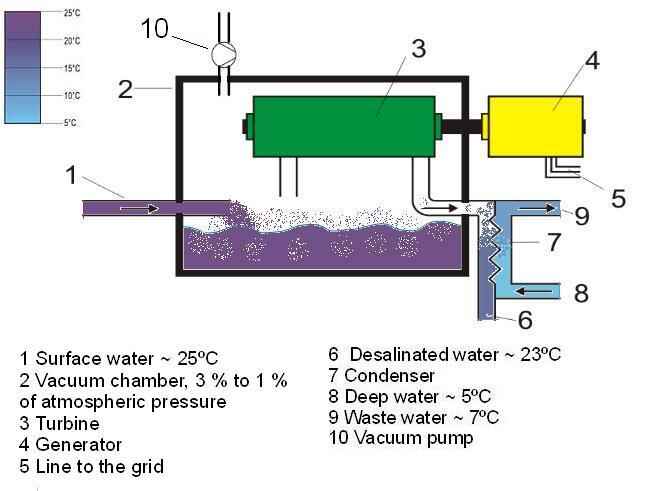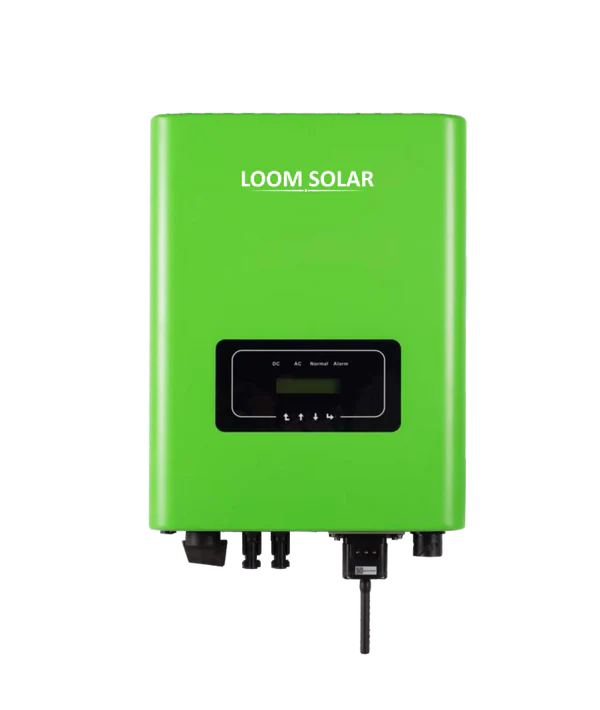5 Types of Offshore Foundations Explained
Types offshore foundations are; monopile, gravity, jacket, suction caisson, and tripod foundations.
These may be selected for offshore wind turbine installation, or for oil rig installation, based on various criteria.
It is important to note that the types of offshore foundations differ from types of floating offshore platforms or floating foundations, which include semi-submersible, Spar Buoy (Spar), and Tension Leg Platform (TLP) [2].
This article discusses the types of offshore foundations, as follows;
1). Monopile Foundation (as one of the Types of Offshore Foundations)
Monopile foundation is the most common type of offshore foundation, which is based on a simple design that utilizes a singular, vertical component to support the weight of a structure; such as an offshore wind turbine.
A monopile foundation works by lateral loading, where the entire weight of a structure is supported laterally by a large-diameter steel pile driven into the subsurface formations [1].
The diameter of the steel pile in monopile foundations is usually around 4.0 on average, while some may exceed this value significantly, depending on the amount of load involved.
Aside mechanical load, other factors that determine if and how monopile foundations are used include geotechnical properties of soil that make up the base material on which the foundation in installed.
Monopile foundations are used for supporting structures whose geometry and center of gravity are such as allow for transmission of weight along a singular, vertical plane.
The use of this monopile foundation for offshore wind turbines is most recommendable in locations with shallow water depth and/or significant soil shear resistance. It is a versatile and yet simple type of offshore foundation that can be re-modeled or modified to suit various conditions, and may also be used with hybrid renewable energy systems in offshore locations.
It is important for careful analysis of all geometric and gravitational factors to be carried out before monopile foundation is used, so as to prevent structural collapse, especially under aerodynamic pressure [3].
2). Gravity Foundation
Gravity foundation, or gravity-based foundation (GBF), is another common type of offshore foundation that is used to support structures [5].
The gravity foundation works by distributing the weight of a given structure across a relatively broad surface area, so that the gravitational load at any given point is diminished in comparison to the total load being carried.
Gravity foundation is most suitable for shallow offshore installations, and can be expensive to install at significant depth [8].
Because of their broad surface-area span of contact, the gravity foundation can be used in locations where soil has low bearing capacity. However, it performs best with high-bearing capacity soils.
3). Jacket Foundation (as one of the Types of Offshore Foundations)
A jacket foundation a type of foundation that is designed with a polygonal lattice structure, which comprises of rigid components that are interconnected to provide maximum mechanical support.
In offshore wind development, the jacket foundation is a good option for locations with significant depth, because their extensive and intricate geometry enables them to transfer load from the main structure to the deep sea floor.
It is important to note that jacket foundation can come in any of multiple designs, whose selection is based on specific conditions in any given scenario.
Factors to be considered when designing a jacket foundation for offshore wind development include resistance to corrosion, structural resilience, soil conditions and specific depth value. Generally, the jacket foundation performs well at depths of up to 80 meters and above.
Aside the weight of the main structure being carried, the weight of the jacket foundation must also be considered when analyzing conditions for use. This is because jacket foundations can weigh up to a thousand tons due to their intricate structure.
Lastly, cost considerations must be made when deciding whether or not to use the jacket foundation [7].
The difference between monopile and jacket foundations occurs in the areas of design and suitability, where the monopile foundation has a simpler design and is suited to shallow offshore installations, while jacket foundation is suited to deeper installations.
4). Suction Caisson Foundation
The suction caisson foundation is a relatively recent type of offshore foundation that is designed as a hollow solid anchor, which is sealed at the top and open at the bottom, so that when it has been embedded into soil, it is held firmly in place by the suction forces generated from pressure differentials.
A suction caisson works by establishing a pressure dynamic between its exterior and interior, so that the gravitational pull of the structure exceeds all other forces that act upon it, making it rigidly-stable and difficult to displace.
The purpose of caisson foundation is to provide a base for structural support, as well as a watertight medium which can be used in cases of repair and maintenance.
It must be mentioned here that caisson foundations are also used for water dams and bridges, among other large offshore structures.
Also known as suction bucket, the caisson foundation is very versatile, and may be viewed as a type of anchor for floating structures, as well as a foundation for fixed structures, depending on specific design [6].
It is a good option for floating offshore wind farms [9], and is very similar drilled pier foundation, which is less-used for offshore renewable energy systems.
The difference between drilled pier and caisson foundations is that drilled piers transfer all structural load to subsurface formations, while caissons partly depend on suction forces to bear the structural load.
5). Tripod Foundation (as one of the Types of Offshore Foundations)
Tripod foundation is an innovative and efficient type of offshore foundation that is especially adapted to the needs of wind turbines.
It generally consists of three-legged anchorage that could be based on any of various design details.
Tripod foundation can be seen as an improved form of the jacket foundation that is built to be lighter in weight and more efficient at load-bearing and transfer.
The use of tripod foundation is particularly encouraged where there is enormous supply of wind and wave energy such as poses a threat to structural stability of offshore wind turbines. It is also good to be used at significant depth.
Tripod foundation can be designed as a hybrid of multiple foundation types, to yield designs like the tripod-suction caisson foundation [4].
Advantages of the tripod foundation include ease of installation and maintenance. However, it tends to be expensive compared to other types of offshore foundations.

Conclusion
Types of offshore foundations are;
1. Monopile Foundation
2. Gravity Foundation
3. Jacket Foundation
4. Suction Caisson
5. Tripod Foundation
References
1). Arshad, M.; O'Kelly, B. C. (2015). "Analysis and design of monopile foundations for offshore wind-turbine structures." Marine Georesources and Geotechnology. Available at:
2). Bailey, H.; Brookes, K. L.; Thompson, P. M. (2014). "Assessing Environmental Impacts of Offshore Wind Farms: Lessons Learned and Recommendations for the Future." Aquatic Biosystems 10(1):8. Available at: https://doi.org/10.1186/2046-9063-10-8. (Accessed 6 February 2023).
3). Basu, D. (2020). "Offshore wind turbine monopile foundations: Design perspectives." Ocean Engineering 213(10). Available at: https://doi.org/10.1016/j.oceaneng.2020.107514. (Accessed 6 February 2023).
4). Chen, X.; Cheng, W.; Wang, P.; El Naggar, M. H.; Zhang, J.; Liu, Z. (2022). "Response of offshore wind turbine tripod suction bucket foundation to seismic and environmental loading." Ocean Engineering 257(12):111708. Available at: https://doi.org/10.1016/j.oceaneng.2022.111708. (Accessed 7 February 2023).
5). Esteban, M. D.; Lopez-Gutierrez, J. S.; Negro, V. (2019). "Gravity-Based Foundations in the Offshore Wind Sector." Journal of Marine Science and Engineering 7(3):64. Available at: https://doi.org/10.3390/jmse7030064. (Accessed 6 February 2023).
6). Houlsby, G. T.; Byrne, B. W. (2000). "Suction Caisson Foundations for Offshore Wind Turbines and Anemometer Masts." Wind Engineering 24(4):249-255. Available at: https://doi.org/10.1260/0309524001495611. (Accessed 7 February 2023).
7). Jalbi, S.; Bhattacharya, S. (2020). "Concept design of jacket foundations for offshore wind turbines in 10 steps." Soil Dynamics and Earthquake Engineering Volume 139(1). Available at: https://doi.org/10.1016/j.soildyn.2020.106357. (Accessed 6 February 2023).
8). Lavanyar, C.; Kumar, N. D. (2020). "Foundation Types for Land and Offshore Sustainable Wind Energy Turbine Towers." E3S Web of Conferences 184:01094. Available at: https://doi.org/10.1051/e3sconf/202018401094. (Accessed 6 February 2023).
9). Liu, B.; Zhang, Y.; Ma, Z.; Andersen, K. H.; Jostad, H. P.; Liu, D.; Pei, A. (2020). "Design considerations of suction caisson foundations for offshore wind turbines in Southern China." Applied Ocean Research 104(1):102358. Available at: https://doi.org/10.1016/j.apor.2020.102358. (Accessed 7 February 2023).

